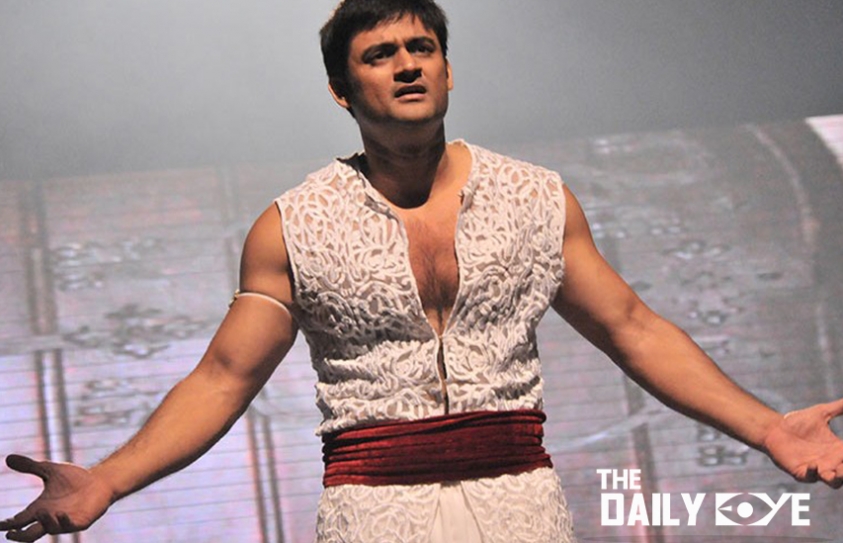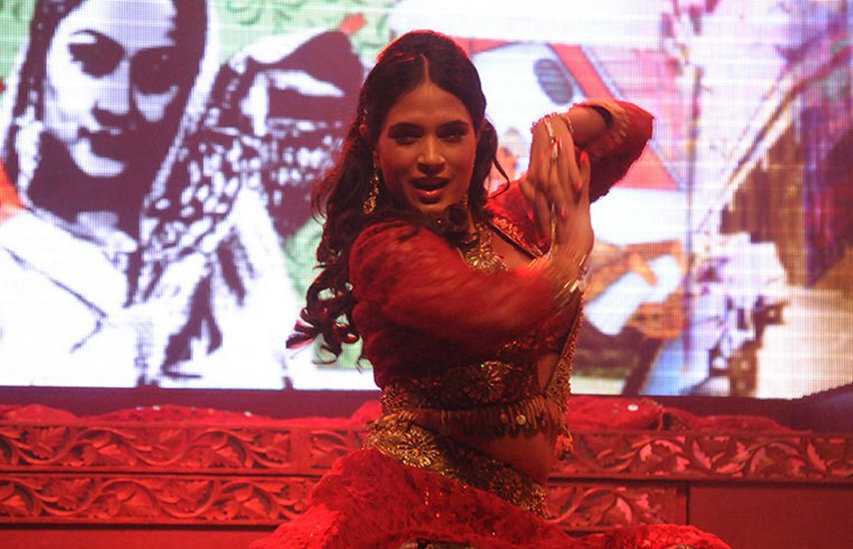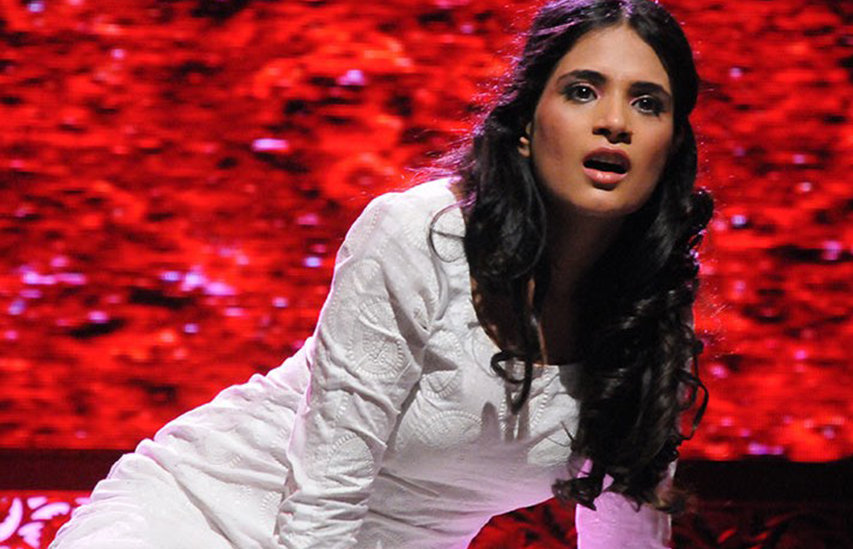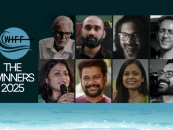
All the World’s a Stage, Not in Mumbai Theatre at Least
by Khalid Mohamed March 27 2018, 5:06 pm Estimated Reading Time: 6 mins, 38 secsFrankly, theatre didn’t prove to be that long-cherished platform to tell a story which was of some value to me – a story about a pre-teen boy who was saved from a road accident by a kothewalli adjoining the city’s famed Kennedy Bridge.
Drawn from a true-life incident, the boy was named Jahaan and the kotha girl Shehzadi for the stageplay titled Kennedy Bridge – performed circa 2011. It sought to trace the boy’s love for his saviour. On becoming an adult he was confused about the nature of his love. Was it platonic or had it developed with time into a sexual attraction? Meshed into this narrative was the sub-text about the exctinction of Mumbai’s once-upon-a-time kotha culture (faint similarities of the Pakeezah ambience were organic, if I may say so). Beer bar dances and escort services had taken over.

The form I chose to dramatise the story, located between the 1950s and the ‘90s, was a fusion of enacted drama: video interludes, kathak, ballet and rock-‘n’-roll dance set pieces, a mix of Bollywood and rock music for the soundtrack, plus backdrops created from artworks, courtesy artists Akbar Padamsee and Chintan Upadhyay. Pure theatre, Kennedy Bridge wasn’t. No such pretensions. I was more than aware I could bungle majorly but what the hell no pain, no reassurance that the creative juices were still percolating within me.
On the city’s theatrescape, I’d had it with watching desi spin-offs of Neil Simon comedies, bland elocutions of heavy-duty texts and the chronic absence of breakaway stylisation in the hit plays of the various seasons. Sexist jokes about marital infidelity, which commanded ripples of guffaws from packed-to-the-rafters audiences, were getting my goat. Experimental endeavours at the Prithvi and the smaller theatre at the National Centre for the Performing Arts did occasionally yield a play of substantial quality and substance. Dare I dream to add to the offmainstream harvest?
Limitless thanks to my colleague in journalism, Deepa Gahlot, who was the driving messiah at the NCPA then, I met up with producer Ashvin Gidwani. Both meant well. Clearly, Deepa aspired to give the NCPA stage a fillip. Gidvani sir told me he loved the story and so, would I get cracking on writing it? I did. Friends were unwaveringly supportive, photographer Ketaki Seth encouraging many to watch the play. She paid me the hughest compliment ever, after a dress rehearsal, “You understand women,” she said quietly. I thought I’d touched some hearts and minds, the rest depended on its opening show and the scheduled line-up of performances at the commodious Tata theatre of the NCPA.

The acting cast was a joy to rehearse with. Richa Chadda, so impressive in Oye Lucky! Lucky Oye! (Gangs of Wasseypur was in the works meanwhile) was cast as Shehzadi. Manav Gohil played the male lead Jahaan, my alter ego as it were. Achint Kaur portrayed the kotha madame and Asif Ali Beg, the household’s help and confidant to the madame as well as the kotha’s star, Shehzadi. To my overwhelming gratitude, they went on to become my friends for life. Neither can I ever forget the born natural child actors – brothers Yash and Hrithik Belani – whose mother ensured that they never blindsided their school studies.
The play received mixed to negative reviews. One said I was relentlessly cannibalising my own life story (and I thought that was a virtue). I was told that Anil Dharker had walked out after the interval, huffing, “Such Bollywood shit!”. A prominent artist kept sneaking out for a cigarette break in the foyer’s smoking zone. A journalist, specialising in the arts, politely said she found the video wall, distracting.
Stage stalwart Dolly Thakore gave me the warmest hug ever backstage after the play’s premiere. Alas, the hug’s warmth turned cold when the producer showed me the sms message she had sent him, congratulating him for the lavish production design (including a wow for how Richa had been outfitted for the later scenes, showing her as an ageing termagant) but flogged the rest of the play. It happens.
After a fistful of shows at the Tata, Sophia, St Andrews’ and a sponsored drinks-and-dinner event at a suburban five-star hotel, it was a wrap. Let me not go into the specific reasons for that.
Suffice it to say that I look back at that one-time effort as a period of learning. Ashvin Gidvani had done his best to make the play go beyond the confined theatre norms. Three lead actors and I were even flown to Puducherry; the actors were coached in voice modulation at Veenapani’s hallowed institute, Adishakti.
More than likely, it was I who had blown it.
Theatre is theatre, you can’t impose any other vocabulary on it, I had spoken in an alien tongue. I had to come to the unnerving conclusion that Kennedy Bridge had turned out to be a ‘vanity exercise’ despite my inner voice warning me not to stray into that space.
Learning did I say? You bet. And so here’s sharing some of the lessons learnt.
- Plays staged at compact venues like the Prithvi or NCPA’s ‘Expy’ are not commercially viable, unless there’s a sponsor to back your play either in spirit or cash.
- There’s a prejudice against actors and directors who have a background, for whatever it is worth, in cinema or any other domain, besides theatre. “Your script is more suitable for a film,” a veteran technician would tell me gently. Manav Gohil, with his track record in television, would be told randomly, “Stick to the spot where the lights are, you’re not in a TV soap here.” It’s another matter altogether that tele-actors have to restrict themselves mainly to close-ups and mid-shots.
- Forget any shred for money in sync with your time and creative faculties. Theatre has to be done for the love of the art itself. Agree agree.
- Publicity, as for the movies, is of the essence. It helps footfalls immeasurably.
- Try to keep the spends to the bare minimum, particularly at the rehearsals. Again, agreed.
- Open the show towards the Christmas month. The nip in the air is salubrious for theatregoers.
- Costumes and props, get the most appropriate ones, use your ideas in consonance with the stage design.
- Adapt the play to different venues: large and small. It the play travels to out-of-town venues, remember you won’t be able to carry most of your unluggable props. Correct.
- Be prepared to tackle sharp knives. It’s a small world, the rival theatre production companies won’t exactly welcome you with open arms.
- Just hope and pray for a rush on the online bookings.
- Recruit actors whose dates won’t be a problem, if there are, you might have to coach a replacement in a flash.
- Trust your production assistants. Don’t chastise them if they goof up, they’re more human than you are.
Consequently, I’m hazarding the guess that theatre is an expert’s metier strictly. If you, a first-timer, wish to enter, do so at your own risk.
Would I ever do a Kennedy Bridge again? That’s a no-brainer question. I don’t know really.
Truth be told, for over a year now if not more I have strived to stage a musical play titled Rishi, co-written with actor Rishi Kapoor. The budgets I have elicited from ‘interested parties’ have been laughable. In the event, I’d rather keep off a production which could be tacky if not mediocre. Never bungle in any jungle. Guts and glory be damned.




-173X130.jpg)
-173X130.jpg)
-173X130.jpg)
-173X130.jpg)
-173X130.jpg)

-173X130.jpg)
